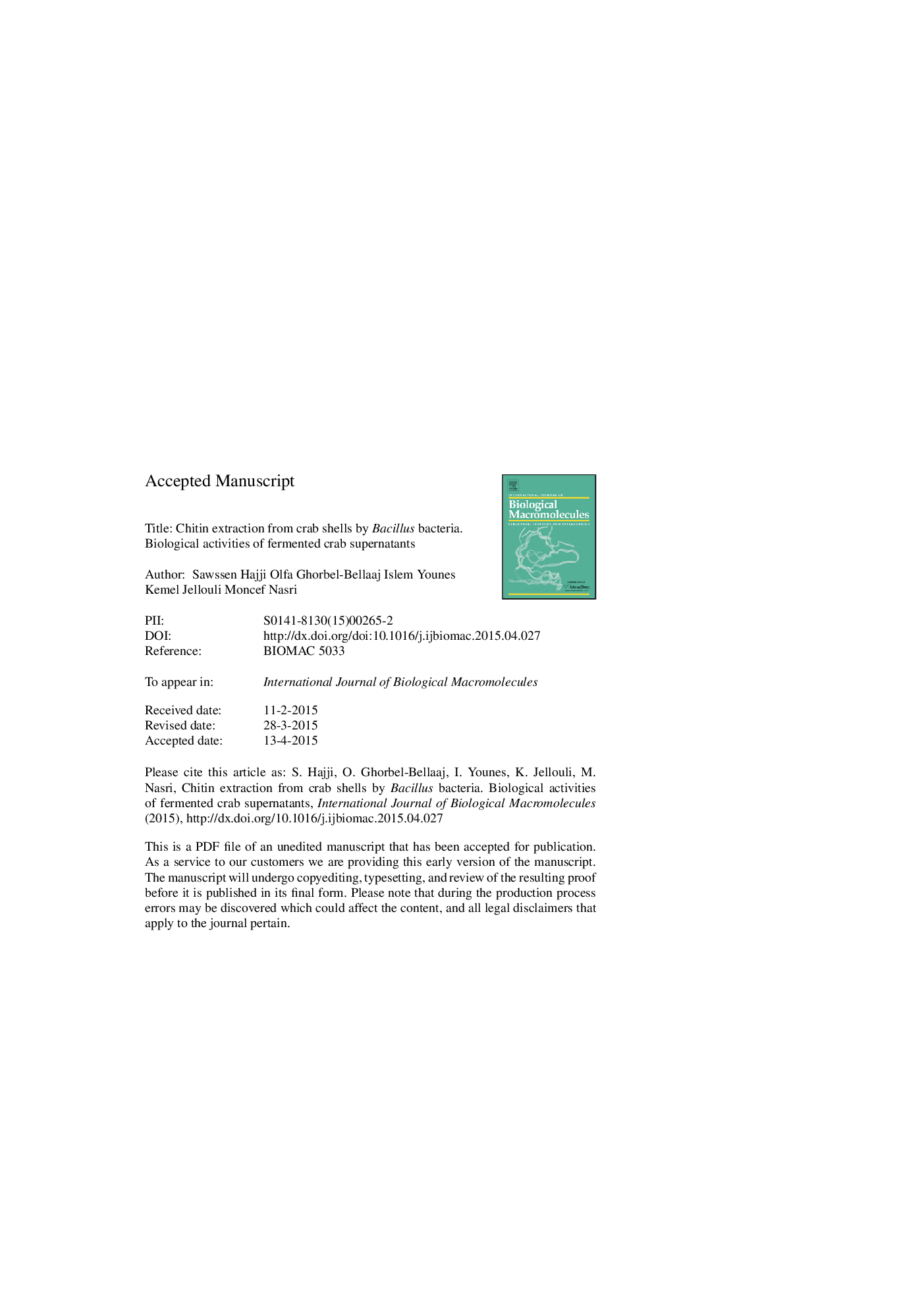| Article ID | Journal | Published Year | Pages | File Type |
|---|---|---|---|---|
| 8330965 | International Journal of Biological Macromolecules | 2015 | 32 Pages |
Abstract
FCSs showed varying degrees of antioxidant activities which were in a dose-dependent manner (p < 0.01). In fact, FCS produced by B. amyloliquefaciens An6 exhibited the highest DPPH free radical-scavenging activity (92% at 4 mg/ml), while the lowest hydroxyl radical-scavenging activity (60% at 4 mg/ml) was obtained with B. subtilis A26 hydrolysates. However, the highest reducing power (OD700nm = 2 at 0.5 mg/ml) was obtained by B.amyloliquefaciens An6 hydrolysates. These results suggest that crab hydrolysates are good sources of natural antioxidants. Further, FCSs were found to exhibit antibacterial activity against Gram-positive and Gram-negative bacteria.
Keywords
Related Topics
Life Sciences
Biochemistry, Genetics and Molecular Biology
Biochemistry
Authors
Sawssen Hajji, Olfa Ghorbel-Bellaaj, Islem Younes, Kemel Jellouli, Moncef Nasri,
